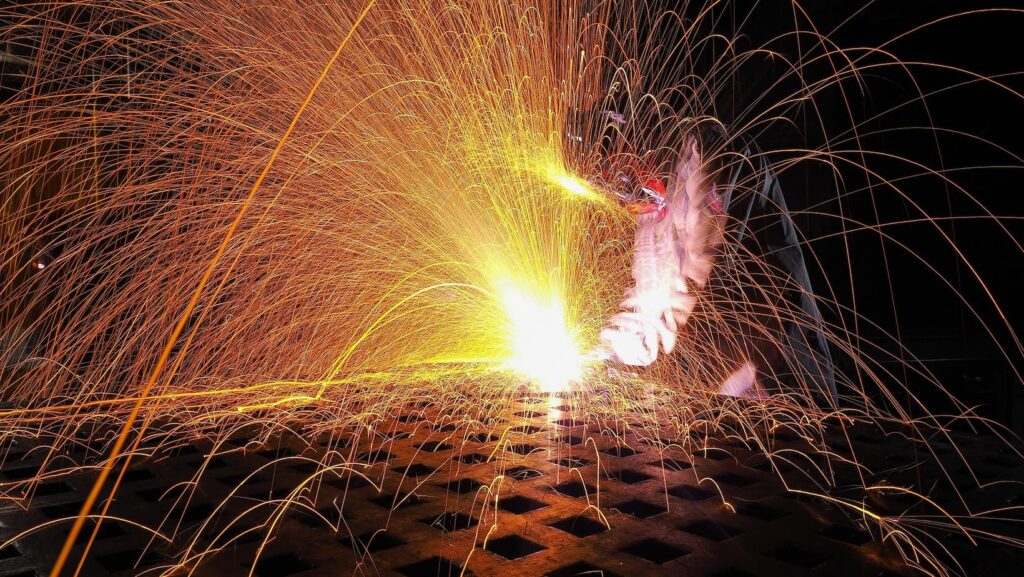
On the other hand, Stick welding is more self-sufficient’. It uses an electrode that’s coated – and as it burns, it makes its shielding gas. No need for a separate one! There’s your basic difference between MIG and Stick welding – it’s all about the electrode and the gas.
A Brief Comparison: MIG Versus Stick Welding Techniques
When comparing MIG and Stick Arc welding techniques, several factors come to the forefront. Starting an arc is relatively more straightforward with MIG, as all you need to do is pull the trigger and weld, unlike Stick Arc, where you have to scratch start, and the electrode can stick.
The learning curve for MIG is moderate, requiring more effort to set up compared to the low learning curve of Stick Arc. Cost-wise, MIG welding is more expensive than Stick Arc. MIG welding works best on bright white metal and is less tolerant of wind speeds over 5 MPH.
Post-weld clean-up is minimal in MIG, while Stick Arc welding produces more slag and spatter. MIG welding can accommodate thin stock down to 24 gauge, while Stick Arc is suitable for 1/8 or thicker stock. Stick Arc is the preferred method for thick stock over 3/8 inches due to its better penetration.
Welding cast iron is stronger and better with Stick Arc, although MIG is acceptable but produces a weaker weld. For aluminum, MIG welding provides a cleaner outcome as compared to the Stick Arc, which can be a bit messier.
Regardless of these differences, it’s important to choose a reliable company for all your welding needs. Look for experience, expertise, and quality workmanship when selecting a welding service provider like Renteca.
So, Which One Should You Choose?
Honestly, it depends on your specific needs. Let us delve deeper into the differences between the two of them.

Stick or Arc Welding
Think of Stick, or Arc Welding, as that friend who’s got a fancy full name that no one really uses – “Shielded Metal Arc Welding” or SMAW. Some folks also call it “Manual Metal Arc Welding” or even “Flux Shielded Arc Welding”. But let’s stick to “Stick Welding”; it’s easier, right?
Picture it like this: you’ve got a welding rod, about the length of a ruler, snug in an electrode holder. Connect your ground cable to the piece you’re working on, and voila, you’ve got an electrical circuit ready to go. Strike that electrode against your piece, like striking a match, and an arc forms! As you weld, your electrode gets used up, kind of like a pencil being sharpened down.
Now, remember talking about the electrode being coated? That coating is flux, and it’s pretty awesome. As you weld, it provides a protective gas shield, keeping any pesky reactive gases at bay and ensuring your weld is as clean and strong as possible. The best part? Stick Welding is super user-friendly. It’s like riding a bike – you pick it up pretty quickly, making it a go-to for beginners.

MIG Welding
MIG welding, as it’s fondly known, is actually part of the family that goes by the name “Gas Metal Arc Welding” (GMAW). Interesting right? This can also be called Metal Active Gas (MAG) welding when an active shielding gas is working its magic. You can learn more about the difference between MIG and MAG [here](link).
Now, MIG welding works like this: A solid wire electrode makes its journey from a wire spool straight to a specialized “gun.” Meanwhile, a shielding gas also hitches a ride from a gas tank to the gun. The magic happens when an arc forms between the electrode wire and base metal, and voila! You’re MIG welding.
The wire gets munched up as it’s fed into the weld pool. Sure, the setup might sound a bit complex compared to stick welding, but it’s not rocket science. MIG welding is pretty easy to pick up and use, though it may not be as straightforward as Stick Welding.
Conclusion
At the end of the day, both MIG and Stick welding have their respective strengths and weaknesses. The choice between the two comes down to your specific needs, budget, and skill level. Regardless of which technique you choose, remember to prioritise safety at all times and use quality equipment from trusted companies for a successful welding experience.



